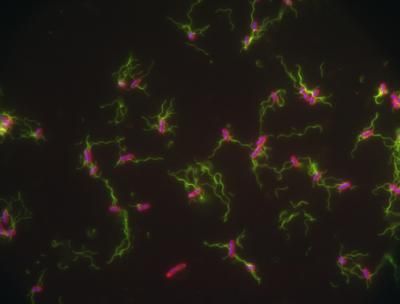Santhera Presents New Data on MC-4R Antagonist Program for Treatment of Cancer Cachexia
Santhera Pharmaceuticals presented the potential of its oral melanocortin-4 receptor (MC-4R) antagonists for treatment of cancer cachexia at the 5th Cachexia conference in Barcelona, Spain. The Company's latest generation of orally active compounds increased food intake by a factor of 3 to 5 and inhibited the development of cachexia in a disease-relevant animal tumor model. In addition, the preclinical candidate exhibited a significant antidepressant-like effect which is considered relevant since depression is frequent in patients suffering from cancer cachexia. Santhera is in partnering discussions for clinical development and marketing of the MC-4R antagonist program.
The preclinical activity spectrum of Santhera's latest generation of compounds indicate potential effects in all key aspects of cachexia such as lack of appetite, enhanced basic energy expenditure and increased catabolism. The compound presented at the Cachexia conference was shown to have dose-dependent acute positive effects on food intake, i.e. during the first four hours after administration the compound increased food intake 3-5 fold. Moreover, post treatment energy expenditure was significantly decreased in normal mice but not in mice deficient of MC-4R. In a well characterized murine model of cancer cachexia (C26 adenocarcinoma model) daily oral treatment significantly inhibited the development of cachexia and normalized the expression of biochemical markers of muscle wasting. Moreover, the lead compound was shown to exhibit antidepressant-like activity in the rat chronic mild stress model, the most sophisticated rodent model of depression. This effect represents a valuable additional benefit since depression is frequently present in patients suffering from cancer cachexia. Santhera's compounds were found to be orally active and to easily penetrate the blood brain barrier. They were well tolerated in exploratory seven-day tolerability studies in mice and rats and were devoid of undesirable ancillary activities. In addition, the compounds exhibited a clean genotoxicity profile and little liability for drug-drug interactions.
Topics
Organizations
Other news from the department research and development

Get the life science industry in your inbox
By submitting this form you agree that LUMITOS AG will send you the newsletter(s) selected above by email. Your data will not be passed on to third parties. Your data will be stored and processed in accordance with our data protection regulations. LUMITOS may contact you by email for the purpose of advertising or market and opinion surveys. You can revoke your consent at any time without giving reasons to LUMITOS AG, Ernst-Augustin-Str. 2, 12489 Berlin, Germany or by e-mail at revoke@lumitos.com with effect for the future. In addition, each email contains a link to unsubscribe from the corresponding newsletter.
Most read news
More news from our other portals
Last viewed contents
Artie_Lange
Oncogenex Presented Study Showing Preliminary Results for Phase II Trial of OGX-011 in Advanced Prostate Cancer
Robert_Aldworth

Research on Synaptic Vesicle Endocytosis Wins 2015 Eppendorf & Science Prize
Category:Bioethanol_producers
Category:LRR_domain
Antiviral_Therapy
Belgian_Synesthesia_Association
X-linked_adrenal_hypoplasia_congenita
Dendreon research shows promising activity of Provenge in combination with Avastin





















































